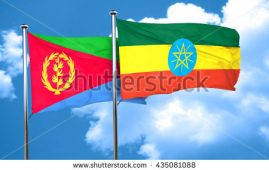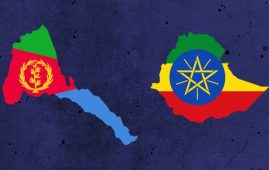The Ethiopian News Agency reported on Wednesday a drop in the number of people needing humanitarian assistance. Given the significance of the news, I reposted it here. I will present a summary of the Joint Government and Humanitarian Partners’s Document, which is the basis of this news, when it is made available.
For now, read the uplifting news as reported by ENA:
**************
Number of Needy People Decreases to 2.3 Million: Donors
Addis Ababa, November 24, 2010 (Addis Ababa) – The number of needy people has decreased from 5.2 million in January to 2.3 million recently, the Ministry of Agriculture and international donor organizations announced.
In a joint news conference they gave here on Wednesday, officials of the Ministry and donor organizations said about 20 million USD is also required to meet the prioritized needs in the non-food sectors.
Agriculture State Minister, Mitiku Kassa said the overall good performance of rains in 2010 and successful disaster management endeavors coupled with continued effective development efforts in the country towards ending poverty (by achieving food security at the country and household level in general and reducing disaster risks and vulnerabilities in particular has resulted in the decrease of the number of food beneficiaries.
Pending verification through current assessment, it is expected the beneficiary number to further decline and reach as low as less than a million in the coming few months given the anticipated overall improvement in food security in most areas of the country, he said.
“I am quite sure that this is what we all hoped for and something that should make all of us very happy,”
Of the estimated 2.3 million relief food beneficiaries, 29.2 per cent is from Somali, 29 per cent from Tigray, 26.6 per cent from Oromia state.
Using available resources currently, 38,200 MT of food is being dispatched fro the seventh round to around 1.6 million beneficiaries.
It is expected around 32,600 MT of food to be dispatched to about 900,000 beneficiaries in the next round (if the need going to be confirmed through verification assessment by the regional state).
This indicates that the country is in a position to meet estimated needs with available resources.
UN Acting Humanitarian Resident Coordinator to Ethiopia, Ted Chaibam on his part said ‘ we welcome today’s release of the results of the 2010 Belg assessment but also need to express to express our concern that it has taken some four months for the results of an assessment that we supported and participated in to be released.
The result confirm that which we all have assumed for many months: the good rains witnessed this year have contributed to a general improvement in food security throughout the country.
Even in this – best year in a decade- the most vulnerable have continued to require assistance.
As noted today, 2.3 million people have continued to require relief food assistance.
Some 600,000 children and pregnant and lactating women still require therapeutic and supplementary nutritional supports.
T-7:30-1:47 PM
—END—
*****************
State Minister of Agriculture Mitiku Kassa’s speech
Opening Speech by H.E. Ato Mitiku Kassa at the official launch of updated Humanitarian Requirements Document for November‐December 2010 and beyond November 24, 2010, DRMFSS
Excellencies,
Distinguished Guests,
Ladies and Gentlemen,
It is my great pleasure to welcome you all, on behalf of the Government of the Federal Democratic Republic of Ethiopia and that of my own, to this very important event at which we are going to officially launch the revised Humanitarian Requirements Document (HRD) for the year 2010.
The updated HRD provides revised beneficiary numbers and prioritized food and non‐food needs and resource requirements to meet those identified and prioritized needs for the remainder period of 2010 and beyond, i.e. until new figures are produced based on the findings of the ongoing multi‐agency livelihood security assessment mission in January 2011.
Before I get into the updated beneficiary numbers and prioritized needs, I would like to take this opportunity to apologize for the delay in the release of this update. It was mainly due to late arrival of endorsed figures from some regional states and I’m confident that such delays won’t be repeated in the future. That being said, let me now take few minutes to update you on our collective efforts so far towards addressing humanitarian needs identified in the January 2010 HRD.
Distinguished Guests,
Ladies and Gentlemen,
Following the official launch of the 2010 joint Government and humanitarian partners’ Document in January this year, the donor community has provided a great deal of resources.
More specifically, in case of the food sector, the need (642,983 MT) has been fully resourced through carryover stock and pledges from 2009 and new donations. Concerning food allocation and supply, we have been able to dispatch a total of 542, 467 MT of relief food in the period from January through October/November in seven rounds.
When it comes to the non food sectors, it is estimated a total of USD 41,891,104 was secured, which is about 76percent of the total requirement (55,076,927).
Distinguished Guests,
Ladies and Gentlemen,
Please allow me to take this opportunity to extend my heartfelt gratitude, on behalf of the Federal Democratic Republic of Ethiopia, My ministry, and implementing partners, to our donor partners that have timely responded to the January 2010 HRD by providing in kind as well as financial resources needed for the implementation of prioritized food and non‐food needs. By comparison, however, as usual, the food sector appeared to be more resourced than the non‐food sectors though, this year, there has been an improvement in terms of resource availability in the non‐food sector too.
Distinguished Guests,
Ladies and Gentlemen,
Saying all the above, let me now come to the updated beneficiary numbers for the remainder period of the 2010 and beyond (i.e. until we have the new figures from the ongoing multi‐agency livelihood security assessment mission in January).
As we all know, the findings of the 2010 belg/gu assessment mission and monitoring results to date indicate that despite continued or deteriorated food security situation in some pocket areas emanated from variability in weather patterns, overall, the performance of the 2010 belg/gu as well as the Meher seasons had been quite good and much better than in recent years in most areas of the country leading to improved food security conditions currently and promising prospects in 2011.
The short rains, locally known as deyer in Somali and hageya in Oromiya, however, so far, are reported to have been below normal in most areas leading to increased concerns considering their potential negative effects on livelihoods of pastoralists and agro pastoralists at risk and that have not yet fully recovered from the effects of successive poorly performed seasons.
Ladies and Gentlemen,
The overall good performance of rains in 2010 and successful disaster management endeavors coupled with continued effective development efforts in the country towards ending poverty (by achieving food security at the country and household level in general and reducing disaster risks and vulnerabilities in particular) has resulted in a decreased beneficiary numbers, i.e. from 5.2 million in January to 2.3 million recently.
Pending verification through current assessment, we expect the beneficiary number to further decline and reach as low as less than a million in the coming few months given the anticipated overall improvement in food security in most areas of the country. I’m quite sure that this is what we all hoped for and something that should make all of us here very happy.
Ladies and Gentlemen,
Of the estimated 2.3 million relief food beneficiaries, 29.2percent is from Somali, 29 percent from Tigrai, and 26.3 percent is from Oromiya regional states.
Using available resource, currently, 38,200 MT food is being dispatched for the seventh round to around 1.6 million beneficiaries and we expect around 32,600 MT food to be dispatched to about 900,000 beneficiaries in the next round (if the need is going to be confirmed through verification assessments by the Regional States). This indicates that we are in a position to meet estimated needs with available resource.
However, we require about USD 20 million to meet the prioritized needs in the non food sectors.
Ladies and Gentlemen,
It is important to mention here that since recent years, the direction we have been following is while addressing immediate emergency needs we always concentrate our efforts on putting the required capacity towards full and successful implementation of the disaster risk management approach in the country. This, as you will all agree with me, entails so many works that go well beyond humanitarian interventions and calls for mobilizing additional resources. The revised HRD we are now presenting, however, doesn’t include specific resource requirements related to such works, but the reason why I’m mentioning that is just to remind you of other critical areas that will equally require our attention too.
Excellencies,
Distinguished guests,
Ladies and Gentlemen,
As in the past, our intervention modality will continue to be a case by case resource allocation and delivery approach based upon verification assessments. Under the overall Government leadership and guidance, non‐governmental implementing agencies are also expected to be involved in the implementation of the identified food and non‐food interventions.
Regarding coordination mechanisms, as usual, the overall leadership of humanitarian response remains to be the responsibility of the government. At Federal level, the Ministry of Agriculture through its Disaster Risk Management and Food Security Sector will be responsible for the overall coordination of humanitarian interventions by relevant partners including donor governments, UN agencies, national and international NGOs and civil society organizations.
The sectoral task forces, namely (i) Health and nutrition, (ii) water, sanitation and hygiene, and (ii) agriculture) led by the relevant line ministries will remain to be responsible for coordination, monitoring and reporting on emergency and recovery interventions in their respective sectors together with the relevant UN agencies, NGOs and donors.
At this point, I would like to urge you all to work towards effective and efficient collaboration and coordination among all humanitarian actors as it is a crucial aspect of our intervention efforts to ensure timely and comprehensive humanitarian response.
Finally I would like to, once again, extend my heartfelt thanks, on behalf of the Government of Ethiopia and that of my own to all our partners for their unreserved contributions and efforts made to save lives and livelihoods of affected people. And I am also confident that such spirit of collaboration and partnership in humanitarian undertakings will be further strengthened and extended towards successful achievement of the country’s Growth and Transformation Plan, which will play a fundamental role in eradicating poverty and also reducing disaster risks and vulnerabilities in Ethiopia.
I thank you.
**************






